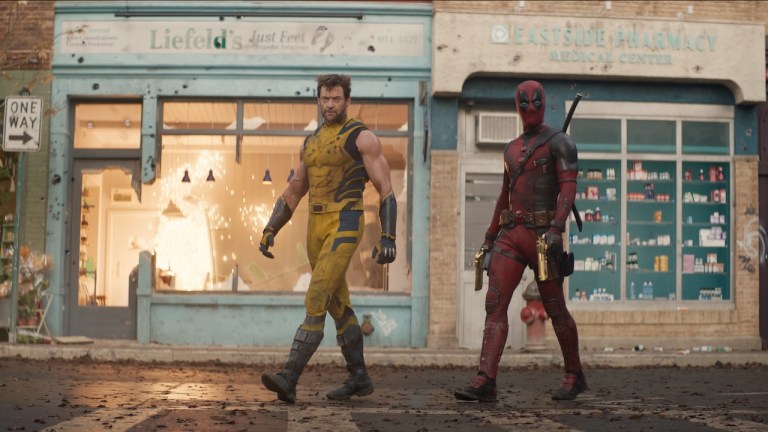The Rule Deadpool & Wolverine Had to Follow to Not Break the MCU
Deadpool represents anarchy, but Ryan Reynolds has rules that not even Deadpool & Wolverine co-star Hugh Jackman can break.

Anyone who has been to the movies lately has probably had a strange experience. After the trailers and soda commercials, but before the feature film, Wolverine looks out from the screen and talks directly to the audience. “Hey, Bub. You’re in a movie theater,’ he snarls, before unleashing a mostly censored litany of profanities.
It feels weird, and not just because Wolverine isn’t really all that sweary. It feels weird because Deadpool breaks the fourth wall, not Wolverine, or anyone else, actually.
Thankfully, the producers of Deadpool & Wolverine know that fourth-wall breaking is Deadpool’s domain alone. In a behind the scenes report from Vanity Fair, Deadpool star Ryan Reynolds underscores the importance of fourth-wall and who can break it.
“There are rules. Very specific rules,” stated Reynolds. “You would diminish stakes in the film if everyone—or even anyone else—was also aware of the fourth wall or any kind of meta aspect. Deadpool is the only character who has that ability to do that.”
The rule doesn’t stem from the fact that Reynolds, not Deadpool & Wolverine director Shawn Levy, is the movie’s true auteur. Rather, it comes from an understanding of the stakes of the movie.
“If everyone [broke the fourth-wall], then you would no longer invest in that character as much. You really want to believe that the villain is a villain. You really want to believe that your costar’s character is true as well. Deadpool can undermine that—and does undermine that—because you don’t want the audience to take him as seriously.”
The restriction keeps the characters true to the comics, as most people in the Marvel Universe treat Deadpool’s meta textual commentary as just one more irritating thing that he does. That response sets Deadpool aside from other fourth-wall breaking comic book characters. When, say, Ambush Bug in the DC Universe or even his fellow Marvel Universe denizen Howard the Duck, know about the real-world, they do so almost without any acknowledgement from anyone else in the scene. But Deadpool uses it as a strategy, a way of coping with his madness and being very good at killing people.
If everything within the world were to feel fake, it would cheapen everything, which Reynolds understands… and Jackman did not. At least at first.
“I made the same mistake—day one. I made the suggestion and it was like, ‘Yeah…’,” admitted Jackman. But after Reynolds explained the importance of the restriction (“I always feel like an absolute dick when I’m trying to explain: I need people as invested as humanly possible in every other character while knowing that only Deadpool is the unreliable narrator,” he said), then Jackman got on board.
“Ryan beautifully describes Deadpool’s brain as a half-baked omelet,” continued Jackman. “And so, whatever he’s doing—talking to a camera, to Wolverine—it’s just another layer of annoying crap that I’ve got to put up with. Who knows what the hell he is doing? But it’s just another excuse to punch him in the face.”
Thus, Wolverine gets to be the same tortured, bitter mutant we know from the X-Men and Wolverine movies produced by Fox, even while Deadpool talks about Kevin Feige and Green Lantern in the same scene.
See, rules are good. So turn off your phone in the movie theater.
Deadpool & Wolverine debuts in theaters on July 26.
